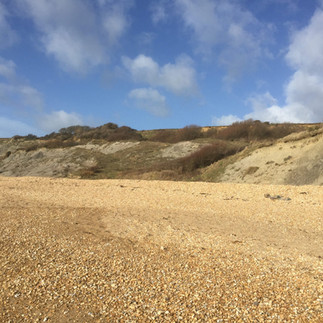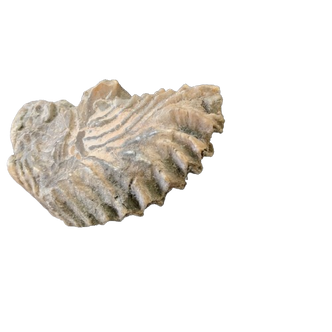Fossil Hunting at Furzy Cliff at Bowleaze Cove on the Jurassic Coast of Dorset.
- Wayne Munday
- May 2, 2024
- 3 min read
Updated: Mar 25
Fossil Coast Drinks Co is pleased to introduce Steve Snowball as a guest blogger who will be sharing his knowledge, experience and expertise about fossil hunting at Furzy Cliff at Bowleaze Cove on the Jurassic Coast of Dorset. Steve is an accomplished author of "A Guide to Fossil Collecting in England & Wales" and co-author of four other highly acclaimed guides to fossil collecting on the Dorset coast.

Furzy Cliff is situated at the far eastern end of Weymouth sea front. Here, the cliffs of Oxford Clay were once considered to be the best site in the UK for fossil vertebrate remains. Large bones of the dinosaur, Metriacanthosaurus parkeri were discovered here and fossils were numerous, especially of marine reptiles and enormous Gryphaea dilatata oyster shells.
Erosion here was prevalent and in May 2013, Weymouth Planning Committee was told by council officers that there was a 1:20 chance that further landslips from Furzy Cliff could sweep away parts of the Bowleaze Coveway road by 2063 and furthermore there was a 1:20 chance that cliff falls could undermine some homes by 2113.
Subsequently, Furze Cliff was considerably reduced in size and notably, a coastal defence was built which now stretches along the Oxford Clay cliff face for some metres. The photo below shows Furzy Cliff in 1978, prior to the drastic alterations and where the sea once reached the cliffs, which slumped frequently.

Today, Furzy Cliff is a shadow of its former fossil-bearing location and is almost entirely dependant upon rain and storms, rather than the force of the sea, for erosional purposes.
As a consequence, fossils are fewer but the site can reveal some, even under these less favourable conditions, most notably bivalves, such as Modiolus bipartitus or Lopha gregarea.
Vertebrate remains are not as common, although in 2024, a plesiosaur tooth and a cusp of Egertonodus (a Jurassic shark) were found here. The cliff exhibits fossils from the Weymouth Member of the Oxford Clay Formation and the Gryphaea dilatata oysters still emerge from the clay, although the larger specimens are probably best found at Redcliff Point.
Top Line: Furzy Cliff | Bottom Left: Lopha gregarea | Bottom Middle: Modiolus bipartitus bivalve | Bottom Right: Gryphaea dilatata oyster
The cliff today is still relatively unstable and climbing the slopes is still not advised, despite the clay being covered in vegetation inn places.
Caution is advised when tackling any fossil hunting on Furzy Cliff, as wet, stormy weather can increase the instability of the entire Bowleaze Cove area and slippages can be quite hazardous.
Surprisingly, ammonites are not a common find here, despite the site being of Oxford Clay.
Even rarer is Goliathiloceras (Pachycardioceras) magnacanthum (Below right), a cardiocerid which has occurred at this location.
The Oxford Clay here is from the Cordatum Biozone, with the ammonite, Cardioceras cordatum (Above Right) found but often fragmented.
Access is probably easier if you park at DT3 6PP, near Waterside Holiday Park or on Bowleaze Coveway, both of which are near to toilets and a café, and not too far from the town centre.
About Guest Blogger - Steve Snowball

Steve Snowball spent a total of 35 years working in education; initially as a teacher, then as a headteacher and finally as an education advisor in West Sussex. He retired to live on the Jurassic Coast of West Dorset, where he was able to pursue his keen interest in collecting fossils and spending time walking his dogs, enjoying landscape photography, oil painting and gardening. Steve is the author of ‘A Guide to Fossil Collecting in England & Wales’ and co-author of a series of four other highly-acclaimed guides to fossil collecting on the Dorset coast, all published by Siri Scientific Press.























